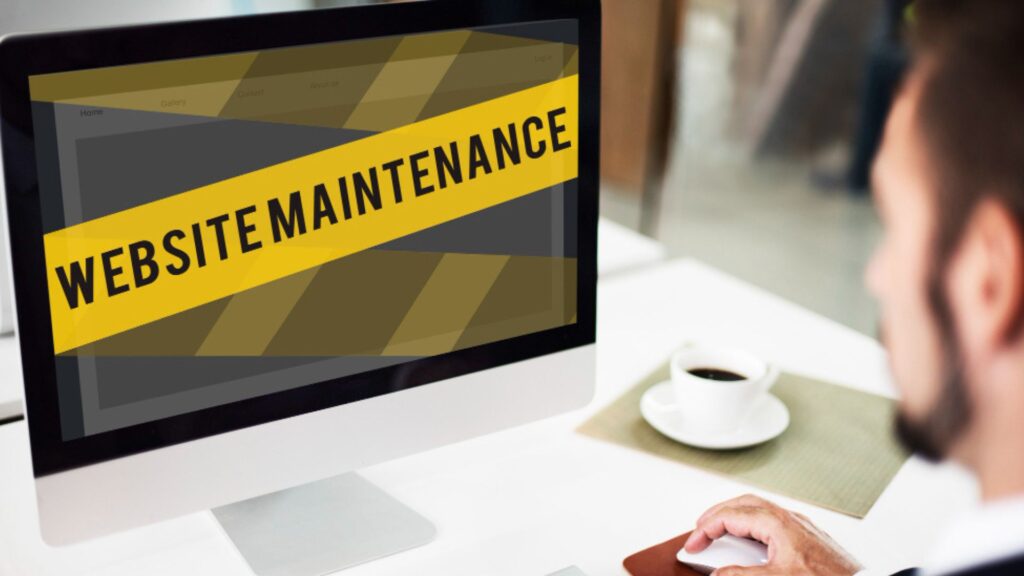Keep Your Site Secure with Expert WordPress Maintenance Services
Introduction
Running a WordPress website is exciting, but it also comes with responsibilities. Beyond design and content, your site requires ongoing care to remain secure, stable, and effective. This is where WordPress maintenance services play a critical role.
Whether you manage a personal blog, an online store, or a corporate website, regular maintenance ensures your site remains functional, optimized, and aligned with Google’s best practices. In this guide, we’ll explore what WordPress maintenance involves, why it matters, and how to choose the right service provider.
What Are WordPress Maintenance Services?
WordPress maintenance services include ongoing technical and performance-related tasks that keep your website in good health. They typically cover:
- Core updates (WordPress software, plugins, and themes)
- Website security (firewalls, malware scanning, backups)
- Performance monitoring (site speed, uptime, Core Web Vitals)
- Bug fixes (resolving plugin conflicts or broken features)
- Database optimization (removing junk data, revising tables)
- Content management support (minor edits, formatting, uploading)
For an overview of WordPress best practices, see the official WordPress.org support resources.
Why WordPress Maintenance Is Essential
1. Security Protection
WordPress powers over 40% of the internet, making it a common target for hackers. Outdated plugins, weak passwords, or unpatched themes can expose vulnerabilities. Services like Sucuri or Wordfence are often used for malware protection and firewall setup.
2. Better Website Performance
Regular optimization ensures your site loads smoothly and offers a seamless user experience. Search engines like Google evaluate performance using Core Web Vitals, making maintenance a direct ranking factor.
3. User Experience and Accessibility
Well-maintained sites offer consistent navigation, accessibility compliance, and improved trustworthiness.
4. Reduced Downtime Risks
Without routine care, issues can build up and eventually cause website errors. Maintenance reduces unexpected technical problems.
Key Components of WordPress Maintenance Services
🔹 1. WordPress Core, Plugin, and Theme Updates
Keeping WordPress software updated is essential for security and compatibility.
- Updates introduce new features and fix bugs.
- Outdated plugins can break site functions or open security risks.
Use reliable resources such as WPBeginner’s update guide to learn safe updating practices.
🔹 2. Security Monitoring and Backups
Security is one of the most important parts of maintenance. Key steps include:
- Installing SSL certificates for HTTPS.
- Setting up regular backups with tools like UpdraftPlus.
- Running malware scans and firewall protection.
🔹 3. Website Backups and Restoration
A good service provider will ensure:
- Daily or weekly backups of files and databases.
- Secure storage (remote cloud servers).
- Easy restoration options in case of emergencies.
🔹 4. Performance Optimization
Tasks may include:
- Image compression with TinyPNG.
- Database cleanup.
- Caching setup using W3 Total Cache.
- Monitoring uptime and server response.
🔹 5. SEO & Analytics Monitoring
SEO is an ongoing process. Maintenance services often provide:
- Keyword tracking
- Sitemap updates
- Analytics integration using Google Analytics
- Monitoring crawl errors in Google Search Console
🔹 6. Bug Fixes and Troubleshooting
From broken links to plugin conflicts, bugs can frustrate users. A maintenance service team resolves such issues promptly, ensuring your website remains reliable.
🔹 7. Accessibility and Compliance
Accessibility is essential for inclusivity and SEO. Maintenance may involve:
- Ensuring proper color contrast.
- Adding alt text to images.
- Following W3C WCAG Guidelines.
Benefits of Outsourcing WordPress Maintenance Services
- Expertise and Experience – Professional teams specialize in WordPress, spotting issues faster.
- Peace of Mind – You focus on growing your business while experts handle technical care.
- Consistency – Scheduled tasks ensure ongoing optimization.
- Cost-Effectiveness – Preventing issues saves more than fixing major breakdowns.
For business owners, outsourcing often results in improved ROI. Many agencies such as Kinsta highlight case studies where businesses saved time and money by using managed WordPress services.
How to Choose the Right WordPress Maintenance Service
When evaluating providers, consider:
- Pricing models (monthly vs yearly plans).
- Scope of services (basic updates vs full-service management).
- Response and support availability (though avoid unrealistic time promises per Google SOP).
- Reputation and reviews on sites like Trustpilot or Clutch.
DIY vs Professional Maintenance Services
| DIY Maintenance | Professional Services |
|---|---|
| Lower upfront cost | Saves time and effort |
| Requires technical skills | Access to experts |
| Risk of errors | Regular reporting & transparency |
| Good for small blogs | Better for business websites |
If you’re comfortable with WordPress and can manage basic updates, DIY might work. For business-critical sites, professional services are recommended.
Future Trends in WordPress Maintenance
- AI-powered monitoring tools for automated issue detection.
- Stronger focus on accessibility compliance as regulations evolve.
- Integration with performance analytics for deeper insights.
For updates on evolving best practices, keep an eye on WordPress.org News.
Conclusion
Your WordPress website is a valuable asset. Without proper care, security risks, performance issues, and outdated software can compromise its success. That’s why WordPress maintenance services are a smart investment for any website owner.
From core updates and backups to SEO monitoring and accessibility improvements, professional maintenance ensures your website is always secure, optimized, and ready to support your goals.
For more in-depth resources, explore:
